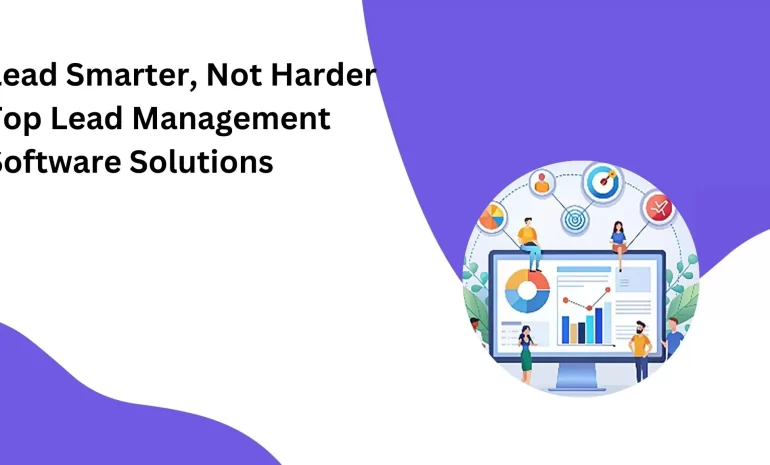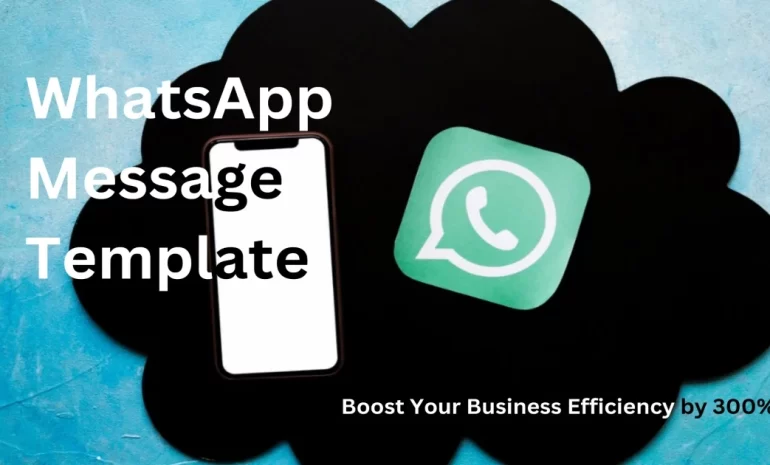In today’s digital age, where communication is predominantly digital, email marketing stands as one of the most powerful tools for agencies to connect with their audience. It offers an incredible return on investment (ROI), allows for direct and personalized communication, and can be finely tuned to deliver the right message to the right people. However, mastering email marketing isn’t as simple as hitting the “send” button. To harness its full potential, agencies must understand its intricacies, from building and managing email lists to crafting compelling content and analyzing campaign performance. This ultimate guide will equip agencies with the knowledge and strategies to excel in email marketing.
Table Of Contents
- Introduction to Email Marketing for Agencies
- What is Email Marketing?
- Why is Email Marketing Essential for Agencies?
- Email Marketing Myths and Facts
- Benefits of Email Marketing for Agencies
- Cost-Effective and High ROI
- Direct and Personalized Communication
- Data-Driven Decision Making
- Enhancing Customer Relationships
- Building Your Email List
- Creating Compelling Sign-Up Forms
- Offering Incentives for Subscriptions
- Leveraging Social Media for List Growth
- Avoiding Common List-Building Mistakes
- Crafting Compelling Email Content
- The Anatomy of an Effective Email
- Writing Captivating Subject Lines
- Crafting Engaging Email Copy
- Incorporating Visual Content
- The Power of Storytelling in Emails
- Designing Effective Email Campaigns
- Types of Email Campaigns
- Choosing the Right Email Templates
- The Art of A/B Testing
- Mobile Optimization
- Email Accessibility
- Personalization and Segmentation
- The Role of Personalization
- Implementing Email Segmentation
- Behavioral Targeting and Dynamic Content
- Using Data for Personalization
- Automating Your Email Marketing
- Introduction to Email Automation
- Setting Up Drip Campaigns
- Welcome Series: Making a Strong First Impression
- Lead Scoring and Nurturing
- Handling Unsubscribes Gracefully
- Analyzing and Optimizing Campaigns
- Key Email Marketing Metrics
- A/B Testing: Experimenting for Success
- Understanding Email Deliverability
- Leveraging Data Analytics Tools
- Compliance and Best Practices
- Understanding CAN-SPAM and GDPR
- Permission-Based Marketing
- Email Frequency and Timing
- Email Design Best Practices
- Handling Bounces and Unsubscribes
- Advanced Email Marketing Strategies
- Predictive Analytics and Machine Learning
- Multi-Channel Integration
- Behavioral Triggers and Event-Based Emails
- User-Generated Content in Emails
- Case Studies: Email Marketing Success Stories
- Real-Life Examples of Agencies Excelling in Email Marketing
- What We Can Learn from Their Success
- The Future of Email Marketing for Agencies
- Emerging Trends and Technologies
- Adapting to Changing Consumer Behavior
- Strategies for Sustained Email Marketing Success
- Conclusion: Mastering Email Marketing for Agencies
- Recap of Key Takeaways
- The Road Ahead: Implementing What You’ve Learned
- Elevate Your Agency’s Success with iNextCRM
Now, let’s dive into each section to unveil the comprehensive world of email marketing for agencies.
- Introduction to Email Marketing for Agencies
What is Email Marketing?
Email marketing is a digital marketing strategy that involves sending emails to a group of recipients with the aim of promoting products, services, or building relationships. It’s a direct and cost-effective method of communicating with your audience.
Why is Email Marketing Essential for Agencies?
Agencies can benefit immensely from email marketing. It offers a way to reach potential clients directly, nurture leads, and build brand loyalty. Plus, it’s highly measurable, allowing you to track what works and what doesn’t.
Email Marketing Myths and Facts
Before we dive deeper, let’s debunk some common myths surrounding email marketing and reveal the facts that agencies should focus on.
Myth: Email Marketing is Dead
Fact: Far from it. Email marketing remains one of the most effective digital marketing channels, offering an impressive ROI of $42 for every $1 spent.
Myth: People Don’t Read Marketing Emails
Fact: People do read emails, especially those that provide value. In fact, 73% of millennials prefer communications from businesses to come via email.
Myth: Buying Email Lists is a Good Idea
Fact: It’s not. Purchased email lists can harm your reputation and deliverability. Building a quality list organically is key.
Now that we’ve clarified these myths, let’s move on to explore the benefits of email marketing for agencies.
- Benefits of Email Marketing for Agencies
Cost-Effective and High ROI
Email marketing is incredibly cost-effective, making it ideal for agencies, especially those with budget constraints. Unlike traditional advertising, email marketing allows you to reach a large audience without hefty expenses.
Why It Matters: Agencies can allocate their budget efficiently, getting the most out of their marketing investments. The ROI for email marketing is impressive, providing a significant return on every dollar spent.
Direct and Personalized Communication
Emails enable agencies to communicate directly with potential clients and current customers. This direct line of communication fosters a personalized connection, allowing agencies to tailor their messages to individual preferences.
Why It Matters: Personalization enhances engagement and builds trust. Agencies can address specific pain points, leading to higher conversion rates and customer retention.
Data-Driven Decision Making
Email marketing provides agencies with valuable data and insights. You can track open rates, click-through rates, conversion rates, and more. This data-driven approach allows you to refine your strategies for better results.
Why It Matters: Informed decisions lead to better outcomes. By analyzing email metrics, agencies can optimize their campaigns, ensuring they resonate with their target audience.
Enhancing Customer Relationships
Email marketing isn’t just about selling; it’s also about building and nurturing relationships. Agencies can use emails to provide valuable content, answer questions, and keep clients informed.
Why It Matters: Strong relationships lead to client loyalty and advocacy. Happy clients are more likely to refer your agency to others, expanding your reach.
Now that we’ve explored the benefits of email marketing, let’s move on to building your email list, a crucial step in your email marketing journey.
- Building Your Email List
Creating Compelling Sign-Up Forms
To kickstart your email marketing efforts, you need subscribers. Crafting enticing sign-up forms is the first step. These forms should be user-friendly and visually appealing, making it easy for visitors to subscribe.
Why It Matters: A well-designed sign-up form is your gateway to growing your email list. It’s often the first point of contact between potential clients and your agency.
Offering Incentives for Subscriptions
People love getting something in return. Offer incentives such as ebooks, webinars, exclusive discounts, or valuable content in exchange for subscriptions. These incentives sweeten the deal and motivate visitors to join your list.
Why It Matters: Incentives make subscribing more attractive. They provide an immediate benefit to the subscriber, increasing the likelihood of conversion.
Leveraging Social Media for List Growth
Your agency’s social media channels are treasure troves of potential subscribers. Promote your email sign-up across platforms to capture a broader audience. Use compelling calls to action (CTAs) to drive conversions.
Why It Matters: Social media has a vast user base. Leveraging it for list growth ensures that you reach a wider audience and convert social media followers into email subscribers.
Avoiding Common List-Building Mistakes
While building your list, it’s essential to avoid common mistakes that can hinder your progress. Some of these mistakes include purchasing email lists (which we’ve already emphasized as a bad practice), neglecting list segmentation, and not seeking permission before sending emails.
Why It Matters: Building a healthy and engaged email list is fundamental to email marketing success. Avoiding mistakes ensures that your list remains active and responsive.
With your email list taking shape, it’s time to delve into crafting compelling email content.
- Crafting Compelling Email Content
The Anatomy of an Effective Email
Before you start crafting emails, it’s crucial to understand what constitutes an effective email. Effective emails have a clear purpose, concise copy, eye-catching visuals, and a compelling call to action (CTA).
Why It Matters: Effective emails drive action. They guide subscribers toward the desired outcome, whether it’s making a purchase, signing up for a webinar, or downloading a resource.
Writing Captivating Subject Lines
Your subject line is the first thing subscribers see. It must grab their attention and entice them to open the email. Use curiosity, urgency, or value-based subject lines to pique interest.
Why It Matters: A great subject line increases your email open rates. If subscribers don’t open your emails, your content won’t reach them.
Crafting Engaging Email Copy
Your email copy should be engaging, informative, and relevant to your subscribers. It should address their pain points, provide solutions, and deliver value.
Why It Matters: Engaging copy keeps subscribers reading. It builds trust and authority, positioning your agency as a valuable resource.
Incorporating Visual Content
Visuals are powerful in email marketing. They break up text, make emails visually appealing, and convey information quickly. Use images, infographics, videos, and other visuals to complement your message.
Why It Matters: Visuals capture attention. They can convey complex information in a digestible format and drive engagement.
The Power of Storytelling in Emails
Storytelling adds a human touch to your emails. Share client success stories, agency milestones, or personal anecdotes to connect with your audience on a deeper level.
Why It Matters: Stories create emotional connections. They make your agency relatable and memorable, increasing the chances of subscribers becoming clients.
With compelling email content at your disposal, it’s time to design effective email campaigns. Let’s explore different types of email campaigns and how to create them.
- Designing Effective Email Campaigns
Types of Email Campaigns
Email marketing offers a variety of campaign types, each serving a specific purpose. Common types include newsletters, promotional emails, transactional emails, and automated drip campaigns.
Why It Matters: Understanding the different types of email campaigns allows agencies to choose the most suitable format for their message and goals.
Choosing the Right Email Templates
Email templates streamline the design process and ensure consistency in branding. Select professionally designed templates that align with your agency’s visual identity.
Why It Matters: Well-designed templates save time and maintain a professional appearance across all your emails.
The Art of A/B Testing
A/B testing involves creating two versions of an email with slight variations and sending them to different segments of your list. By analyzing which version performs better, you can optimize your emails over time.
Why It Matters: A/B testing provides insights into what resonates with your audience, leading to improved email performance.
Mobile Optimization
Mobile optimization is non-negotiable. A significant portion of email opens happens on mobile devices. Ensure your emails are responsive and visually appealing on smartphones and tablets.
Why It Matters: Mobile optimization ensures that your emails reach and engage a broader audience.
Email Accessibility
Accessibility in email design ensures that all subscribers, including those with disabilities, can access and understand your content. Use alt text for images, readable fonts, and proper formatting.
Why It Matters: Accessibility ensures that your emails are inclusive and compliant with accessibility standards.
With your email campaigns ready to roll, it’s time to explore personalization and segmentation.
- Personalization and Segmentation
The Role of Personalization
Personalization goes beyond addressing subscribers by their first name. It involves tailoring content based on their preferences, behavior, and past interactions with your agency.
Why It Matters: Personalization enhances engagement and drives conversions. Subscribers are more likely to take action when emails resonate with their needs.
Implementing Email Segmentation
Email segmentation involves dividing your email list into segments based on specific criteria, such as demographics, behavior, location, or engagement level. Segmentation allows you to send highly targeted and relevant content.
Why It Matters: Segmentation improves email relevance and performance. It ensures that subscribers receive content that aligns with their interests.
Behavioral Targeting and Dynamic Content
Behavioral targeting takes personalization to the next level. It involves sending emails based on a subscriber’s past actions, such as website visits or previous email engagement. Dynamic content adapts based on the recipient’s behavior or preferences.
Why It Matters: Behavioral targeting and dynamic content deliver hyper-personalized experiences, increasing engagement and conversions.
Using Data for Personalization
Leverage data analytics to fuel your personalization efforts. Track subscriber interactions, preferences, and purchase history to create tailored content and recommendations.
Why It Matters: Data-driven personalization ensures that your emails are highly relevant and timely, maximizing their impact.
As you continue your journey into email marketing, automation becomes a powerful ally. Let’s explore how to automate your email marketing efforts effectively.
- Automating Your Email Marketing
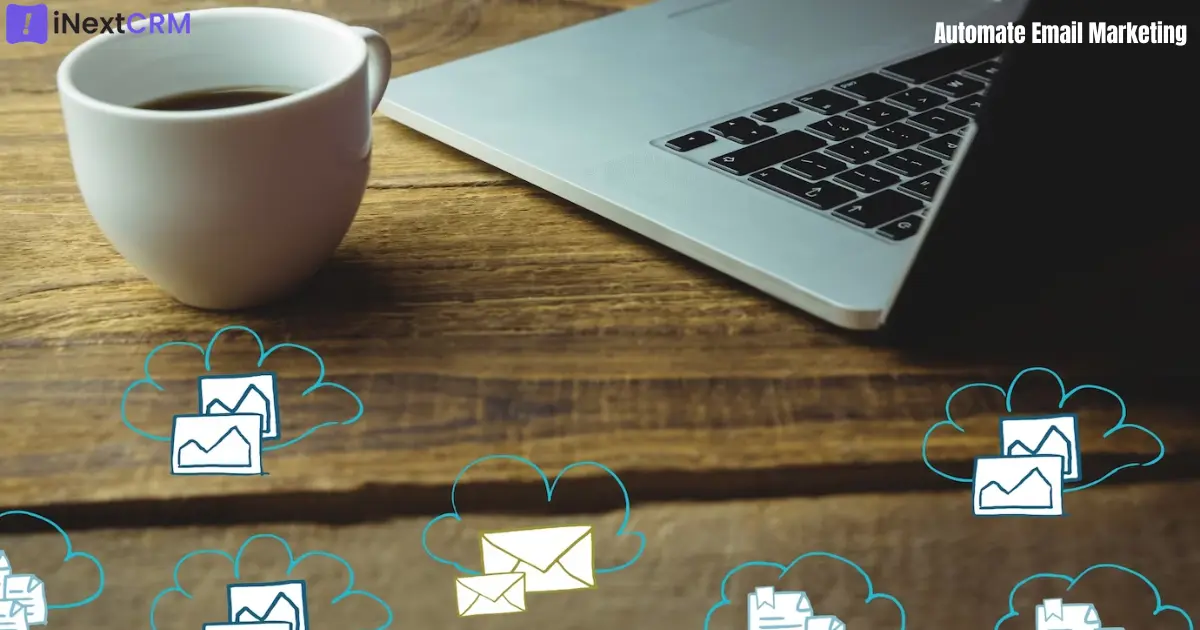
Introduction to Email Automation
Email automation involves sending pre-scheduled, targeted emails based on specific triggers or subscriber actions. It streamlines communication, nurtures leads, and saves time.
Why It Matters: Automation ensures that the right message reaches the right people at the right time, enhancing efficiency and results.
Setting Up Drip Campaigns
Drip campaigns are a series of automated emails sent to subscribers over a predefined timeframe. They nurture leads, provide value, and guide subscribers through the buyer’s journey.
Why It Matters: Drip campaigns build relationships and keep your agency top of mind as subscribers progress toward conversion.
Welcome Series: Making a Strong First Impression
A welcome series is the first interaction subscribers have with your agency. It’s an opportunity to make a memorable impression, introduce your brand, and set expectations.
Why It Matters: A well-crafted welcome series establishes a positive relationship from the start, increasing the likelihood of future engagement.
Lead Scoring and Nurturing
Lead scoring assigns values to leads based on their behavior and engagement. Nurturing involves sending tailored content to leads based on their score, ensuring they receive relevant information.
Why It Matters: Lead scoring and nurturing prioritize your efforts, focusing on leads most likely to convert, while maintaining engagement with others.
Handling Unsubscribes Gracefully
Unsubscribes are a natural part of email marketing. Handle them gracefully by providing an easy opt-out process and confirming the subscriber’s choice.
Why It Matters: Respecting unsubscribe requests maintains your reputation and ensures compliance with email regulations.
Now, let’s delve into analyzing and optimizing your email campaigns for continued success.
- Analyzing and Optimizing Campaigns
Key Email Marketing Metrics
Analyzing email metrics is essential for understanding campaign performance. Key metrics include open rates, click-through rates (CTR), conversion rates, bounce rates, and unsubscribe rates.
Why It Matters: Metrics provide actionable insights for optimization. They reveal what’s working and where improvements are needed.
A/B Testing: Experimenting for Success
A/B testing involves comparing two versions of an email to determine which performs better. Test elements like subject lines, email copy, visuals, CTAs, and send times.
Why It Matters: A/B testing fine-tunes your emails, improving their effectiveness over time.
Understanding Email Deliverability
Email deliverability measures the ability of your emails to reach subscribers’ inboxes. Factors like sender reputation, list quality, and content quality impact deliverability.
Why It Matters: High deliverability ensures that your emails are seen by subscribers, increasing the chances of engagement and conversion.
Leveraging Data Analytics Tools
Data analytics tools provide in-depth insights into email performance. These tools track user behavior, engagement patterns, and conversion paths.
Why It Matters: Data analytics tools help agencies make informed decisions, optimize strategies, and achieve better results.
As you proceed in your email marketing journey, understanding compliance and best practices is crucial. Let’s explore this essential aspect.
- Compliance and Best Practices
Understanding CAN-SPAM and GDPR
Compliance with email regulations is non-negotiable. Understand and adhere to laws like CAN-SPAM (for U.S. senders) and GDPR (for EU senders) to avoid legal issues and fines.
Why It Matters: Compliance ensures that your email marketing practices are ethical and legal, protecting your agency’s reputation.
Permission-Based Marketing
Permission-based marketing means sending emails only to those who have explicitly opted in. Always seek permission before adding subscribers to your list.
Why It Matters: Permission-based marketing builds trust and keeps your list engaged and responsive.
Email Frequency and Timing
Finding the right email frequency and timing is crucial. Avoid bombarding subscribers with too many emails, and consider their time zones for optimal delivery.
Why It Matters: Email frequency and timing affect engagement and subscriber satisfaction.
Email Design Best Practices
Follow email design best practices to ensure your emails render correctly across different devices and email clients. Pay attention to layout, fonts, colors, and mobile responsiveness.
Why It Matters: Well-designed emails are visually appealing, improving user experience and engagement.
Handling Bounces and Unsubscribes
Monitor email bounces and manage them promptly. Implement a robust process for handling unsubscribes to maintain a healthy email list.
Why It Matters: Effective bounce and unsubscribe management ensures list accuracy and compliance.
Now that you’ve honed your email marketing skills, let’s explore advanced strategies to take your agency’s campaigns to the next level.
- Advanced Email Marketing Strategies
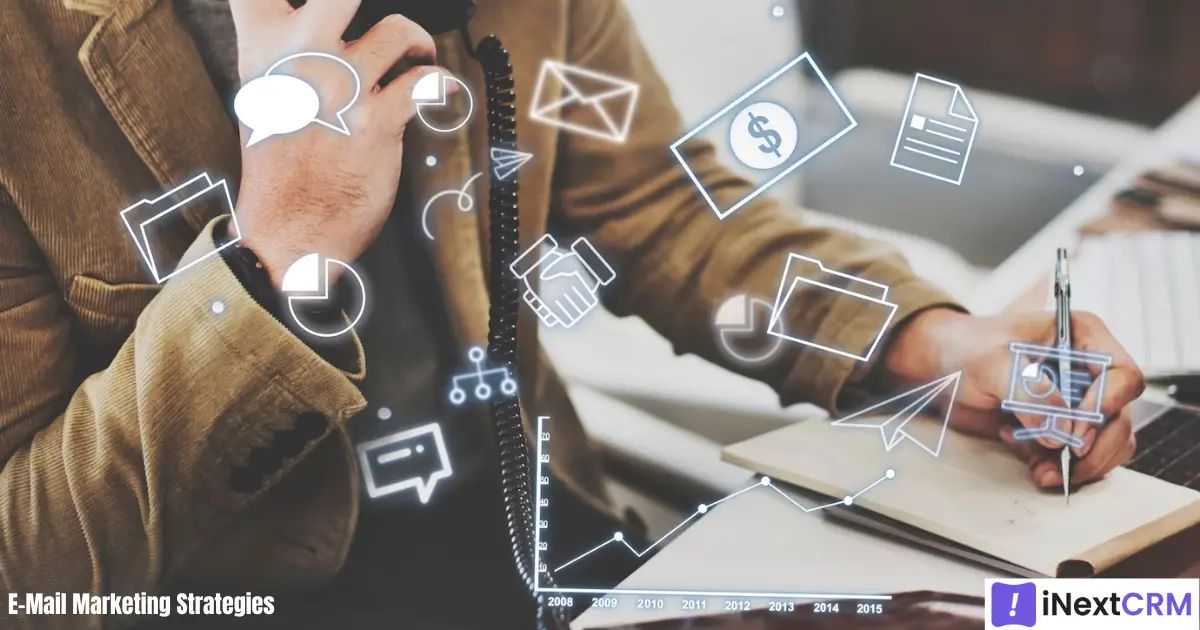
Predictive Analytics and Machine Learning
Predictive analytics and machine learning can analyze vast amounts of data to predict subscriber behavior and preferences. Use these insights to send highly targeted and timely emails.
Why It Matters: Predictive analytics and machine learning enable agencies to stay ahead of subscriber needs, improving conversion rates.
Multi-Channel Integration
Integrate email marketing with other digital channels, such as social media, content marketing, and paid advertising. A multi-channel approach enhances brand visibility and reach.
Why It Matters: Multi-channel integration creates a cohesive marketing strategy, increasing the chances of conversions through multiple touchpoints.
Behavioral Triggers and Event-Based Emails
Set up behavioral triggers that automatically send emails based on specific subscriber actions. Event-based emails, triggered by milestones or actions, create timely and relevant interactions.
Why It Matters: Behavioral triggers and event-based emails engage subscribers at critical moments, boosting conversions.
User-Generated Content in Emails
Leverage user-generated content, such as reviews, testimonials, and social media posts, in your emails. User-generated content adds authenticity and trust to your messages.
Why It Matters: User-generated content builds credibility and persuades subscribers to take action.
As you explore advanced strategies, it’s inspiring to see real-life success stories. Let’s delve into case studies of agencies that have excelled in email marketing.
- Case Studies: Email Marketing Success Stories
Real-Life Examples of Agencies Excelling in Email Marketing
Case studies showcase agencies that have achieved remarkable results through email marketing. These examples provide insights into strategies, tactics, and outcomes.
Why It Matters: Case studies offer practical insights and inspiration, illustrating how agencies can achieve tangible results.
What We Can Learn from Their Success
By analyzing the success stories, agencies can identify common patterns, tactics, and strategies that contribute to email marketing success. These lessons can be applied to their own campaigns.
Why It Matters: Learning from success stories helps agencies avoid common pitfalls and replicate effective approaches.
With inspiration from case studies, let’s explore the future of email marketing for agencies.
- The Future of Email Marketing for Agencies
Emerging Trends and Technologies
The email marketing landscape is continually evolving. Stay ahead of the curve by exploring emerging trends such as interactive emails, AI-driven personalization, and advanced automation.
Why It Matters: Embracing emerging trends keeps your agency’s email marketing strategies fresh and competitive.
Adapting to Changing Consumer Behavior
Consumer behavior evolves, affecting how people interact with emails. Agencies must adapt to changing preferences, mobile usage, and shifting content consumption patterns.
Why It Matters: Adapting to consumer behavior ensures that your emails remain relevant and effective.
Strategies for Sustained Email Marketing Success
Sustained success in email marketing requires ongoing effort and innovation. Develop strategies for consistently delivering value, nurturing relationships, and staying at the forefront of your audience’s minds.
Why It Matters: Long-term success in email marketing ensures a steady stream of clients and revenue for your agency.
As we approach the conclusion of this ultimate guide, it’s essential to recap key takeaways and chart a course for implementing what you’ve learned.
- Conclusion: Mastering Email Marketing for Agencies
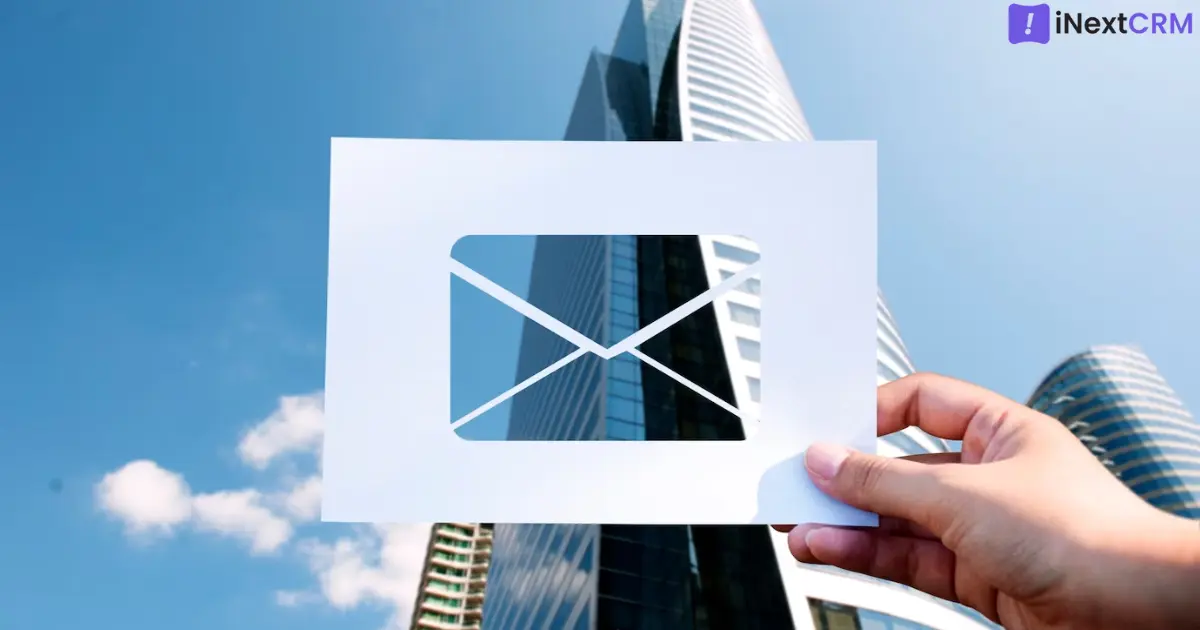
Recap of Key Takeaways
In this ultimate guide to email marketing for agencies, we’ve covered every aspect of this powerful digital marketing channel. From building your email list and crafting compelling content to designing effective campaigns, personalizing messages, automating processes, and optimizing performance, you now have a comprehensive understanding of email marketing.
The Road Ahead: Implementing What You’ve Learned
Knowledge alone isn’t enough. The true value lies in applying what you’ve learned. Implement the strategies, best practices, and advanced techniques covered in this guide to supercharge your agency’s email marketing efforts.
Elevate Your Agency’s Success with iNextCRM
For CRM Solution or Business Automation Service, feel free to reach us at biz@inextcrm.com or call/WhatsApp at +91-7506506672.
Remember, email marketing is a dynamic field. Stay curious, keep experimenting, and adapt to the changing landscape to ensure your agency’s continued success.
Congratulations on mastering the art of email marketing for agencies. Your journey to digital marketing excellence begins now.

